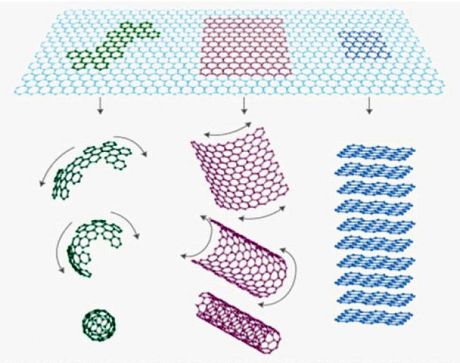Quantum electrodynamics in carbon nanomaterials

Carbon Nanomaterials
By Lengmartin (Own work) [CC BY-SA 3.0 (http://creativecommons.org/licenses/by-sa/3.0)], via Wikimedia Commons
With the advent of nanotechnology, it becomes possible to study and manipulate the interaction of light and matter on the scale of single photons and electrons. New mathematical descriptions of such behaviours in carbon nanostructures will spur new devices.
Nanotechnology is based on the exploitation of materials and devices
with very, very small dimensions – on the scale of atoms and molecules.
At these dimensions, many materials have extraordinarily unique and
exotic properties compared to those of the same materials in bulk form.
The behaviours of nanomaterials can be described with quantum mechanics
quite different from classical mechanics.
The EU-funded QOCAN (Quantum optics of carbon nanostructures) project brings together four scientific teams to create a theoretical basis for using carbon nanostructures as elements of novel optoelectronic nanodevices. Carbon-based nanomaterials such as carbon nanotubes (CNTs) and graphene have intriguing electrical, optical and magnetic properties that have generated tremendous interest. Scientists are studying the interactions of carbon nanostructures and quantum light to develop theories of quantum electrodynamics (QED) and their effects in these materials.
QED is a quantum theory of the electrodynamic force, of the interactions of charged particles with an electromagnetic field. It describes mathematically not only all interactions of light with matter, but also those of charged particles with one another. It is one of the most successful physical theories advanced so far.
Within the first period, the team made excellent progress on all fronts. Scientists have been developing a theory of QED of graphene and of its electron states subjected to a quantised electromagnetic field. Further, researchers have developed the theory of electronic properties of CNTs in the presence of quantum light as well as proposed theories regarding the cavity QED of CNTs. Cavity QED describes behaviours of atoms and photons contained in a very small cavity, a useful experimental model providing a window on quantum behaviours that are quite different from those in free space.
Finally, the team has already formulated theories of terahertz properties of CNTs and of graphene. The terahertz range is the subject of intensive research and development leading to novel devices in imaging, medicine, biology and space exploration, to name only a few.
Convergence of the condensed matter community and its nanostructures expertise with the quantum optics community traditionally working with atomic and molecular systems will lead to new markets for both fields.
published: 2015-11-17

